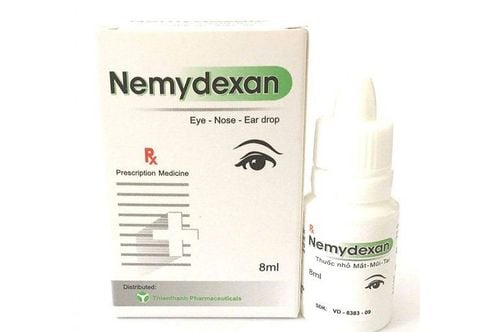This is an automatically translated article.
Azissel belongs to the group of drugs that treat parasites, anti-infectives, antivirals, and antifungals. The drug is indicated in the case of common infections in the respiratory tract, urinary tract - genitourinary. Let's learn about the use and notes when using Azissel in the article below.
1. What is Azissel?
Azissel contains the ingredient Azithromycin dihydrate 250mg or 500mg and other excipients just enough for 1 tablet provided by the manufacturer. The drug is prepared in the form of film-coated tablets, packaged in a box of 1 blister, each blister has 6 tablets.
Azissel is an antibiotic belonging to the Macrolide group that has a good specific bacteriostatic effect on gram-positive, a few gram-negative and intracellular bacteria based on inhibition of bacterial cell protein synthesis by binds to the 50S subunit of the ribosome, inhibiting translocation.
2. What does Azissel do?
Azissel is indicated for the treatment of the following cases:
Treatment of infections caused by susceptible bacteria causing lower respiratory tract infections such as bronchitis, pneumonia, inflammation of the skin and tissues soft, otitis media, upper respiratory tract infections such as sinusitis, pharyngitis and chronic tonsillitis. This drug should only be used in patients who are allergic to penicillin because of the risk of drug resistance. Treatment of sexually transmitted infections in both men and women such as: Uncomplicated genital tract infections caused by Chlamydia trachomatis, Neisseria gonorrhoeae without multidrug resistance, prophylaxis of Mycobacterium avium - intracellulare infections in HIV-infected patients used alone or in combination with rifabutin. Treatment in conjunctivitis caused by Chlamydia trachomatis (trachoma). In addition, Azissel is contraindicated in the following cases:
The patient is allergic to the active ingredient Azithromycin, Erythromycin or any antibiotic of the Macrolide group or other excipients in the composition of the drug.
3. Dosage and how to use Azissel
3.1. How to use Azissel The drug is prepared in the form of film-coated tablets, taken orally. The drug should be taken on an empty stomach, preferably 1 hour before a meal or 2 hours after a meal at the same time each day. The drug should be swallowed whole, without chewing before taking. During treatment, avoid and limit the use of alcoholic beverages or stimulant products, because of the risk of interactions with this drug. 3.2. Dosage of Azissel The following is a reference dose of Azissel:
Pharyngitis and chronic tonsillitis caused by Streptococcus pyogenes:
Take a single dose of Azissel 500 mg orally on the first day, then use a dose of 250 mg orally once a day. day on day 2 to day 5. Total dose is 1.5g. Acute sinusitis caused by H.influenzae, M.catarrhalis or S. Pneumoniae:
Use with a dose of Azissel 500 mg, orally once a day, for 3 days continuously. Chronic Obstructive Pulmonary Disease (COPD) superinfection due to H.influenzae, M.catarrhalis or S. Pneumoniae:
Take a single dose of 500 mg orally on the first day, then use a dose of 250 mg orally once a day on the first day. 2nd to 5th day. Total dose is 1.5g. Mild to moderate community-acquired pneumonia:
Take a single dose of 500 mg orally on the first day, then use Azissel 250 mg orally once a day on days 2 to 5. Total dose is 1 ,5g. Uncomplicated skin and skin structure infections caused by susceptible strains of bacteria such as Staphylococcus aureus, S.pyrogens or S.agalactiae:
Take a single dose of 500 mg orally on the first day, then use with dose of 250mg orally once a day on day 2 to day 5. The total dose is 1.5g. Chancroid (genital ulcer caused by Haemophilus ducreyi), urinary tract infection and cervicitis:
Use with a single dose of 1g. HIV patients infected with Mycobacterium avium strains:
Primary prevention with a dose of 1.2g x 1 time / week. The drug can be treated alone or in combination with Rifabutin 300mg/day. Treatment of disseminated infections with a dose of 600mg x 1 time/day in combination with Ethambutol 15mg/kg/day. Prevention of recurrence of disseminated MAC infection with a dose of 500 mg once daily in combination with Ethambutol 15 mg/kg daily or without rifabutin 300 mg/day. Children:
The first day: Use at a dose of 10mg/kg body weight, followed by 5mg/kg once a day from day 2 to day 5. Note: This is a reference dose given by the manufacturer. provided. The treating doctor will base on the medical condition and health of each patient to prescribe the appropriate dose.
4. Side effects of the drug Azissel
Doctors always consider between the benefits that Azissel brings to the patient and the possible risk of side effects to prescribe the appropriate medication.
Some possible side effects when taking the drug are recorded including:
Common:
Digestive disorders with manifestations such as nausea, abdominal discomfort (abdominal pain / abdominal cramps), vomiting, flatulence, diarrhea. Temporarily elevated liver enzymes, increased neutrophils. Reversible hearing loss. Uncommon:
Asthenia, dizziness, headache, dizziness, somnolence. Abdominal distention, indigestion, loss of appetite. Rash, itching. Rare:
Vaginitis, cervicitis, anaphylactic reactions, angioedema, transient elevation of transaminases. Note: Notify your doctor or medical person immediately if you suspect any side effects of Azissel.
5. Drug interactions Azissel
Some drug interactions may occur when combining Azissel with the following drugs:
Azissel can inhibit the metabolism of many drugs such as Theophylline, Carbamaxepin, Statin, ... leading to increased effects lead to increased toxicity of concomitant drugs. When combined with drugs such as Terfenadine, Astemizole causes QT prolongation, increased cardiotoxicity, arrhythmias. Antibiotic groups with the same mechanism of action on the 50S subunit of ribosomes such as Chloramphenicol, Lincosamide, Aminoside can reduce the antibacterial effect of Azissel. The interactions mentioned above may be incomplete, so if during the use of Azissel, the user suspects that interactions with food, drugs or other supplements, stop using this drug and Go to a medical facility right away.
To avoid interactions, before being prescribed Azissel, the patient should inform the doctor about the drugs they are using, including functional foods. The doctor will base on that to prescribe the appropriate Azissel.
6. Notes when using Azissel
Some notes when patients taking Azissel are as follows:
The drug is excreted by the liver, so it should be used with caution in patients with impaired liver function. Patients should be evaluated for liver function before starting treatment with Azissel. For patients with creatinine clearance less than 10 ml/min that should be used with caution, a dose reduction should be considered appropriate for this patient. Azissel may cause a risk of arrhythmias and torsades de pointes with prolonged use. This drug should only be used for the treatment of bacterial infections when a susceptible strain has been established with certainty. Pregnant women: When using Azissel, there may be potential risks affecting the fetus such as miscarriage, malformation,... Therefore, this drug should not be used during pregnancy, unless when absolutely necessary for the therapeutic benefit of the mother and prescribed by a physician. Lactation: Although the drug is known to be excreted in human milk, its effect on a nursing infant has not been adequately studied. Therefore, in order to avoid potential risks that may directly affect the nursing infant, the drug should not be used unless prescribed by the treating physician. Patients can stop breastfeeding if they have to take medication for the treatment of the disease.
7. What to do when you miss a dose or overdose of Azissel?
If you forget to take your medicine, you should take it as soon as you remember. The drug can be taken 1-2 hours later than the usual time of taking the medicine. But when it is almost time for your next dose, skip the missed dose. Patients should never take a double dose to make up for the missed dose. When the drug overdose, patients often experience symptoms such as headache, cramps, muscle tremors, fatigue, hyperglycemia, drowsiness, headache, nausea, dizziness, hypotension, convulsions, difficulty breathing, respiratory failure, tachycardia, etc. In this case, the drug should be stopped immediately and the treating physician informed. If the above symptoms do not improve and get worse, the patient should be taken to the nearest medical facility. Patients should remember to bring used medicines so that the doctor can understand and handle quickly and promptly. Above is information about the uses, dosage and precautions when using Azissel. To ensure safety for health and maximize the effectiveness of treatment, patients need to take Azissel exactly as directed by their doctor. Note, Azissel is a prescription drug, and patients absolutely cannot use it without a prescription from a specialist.













